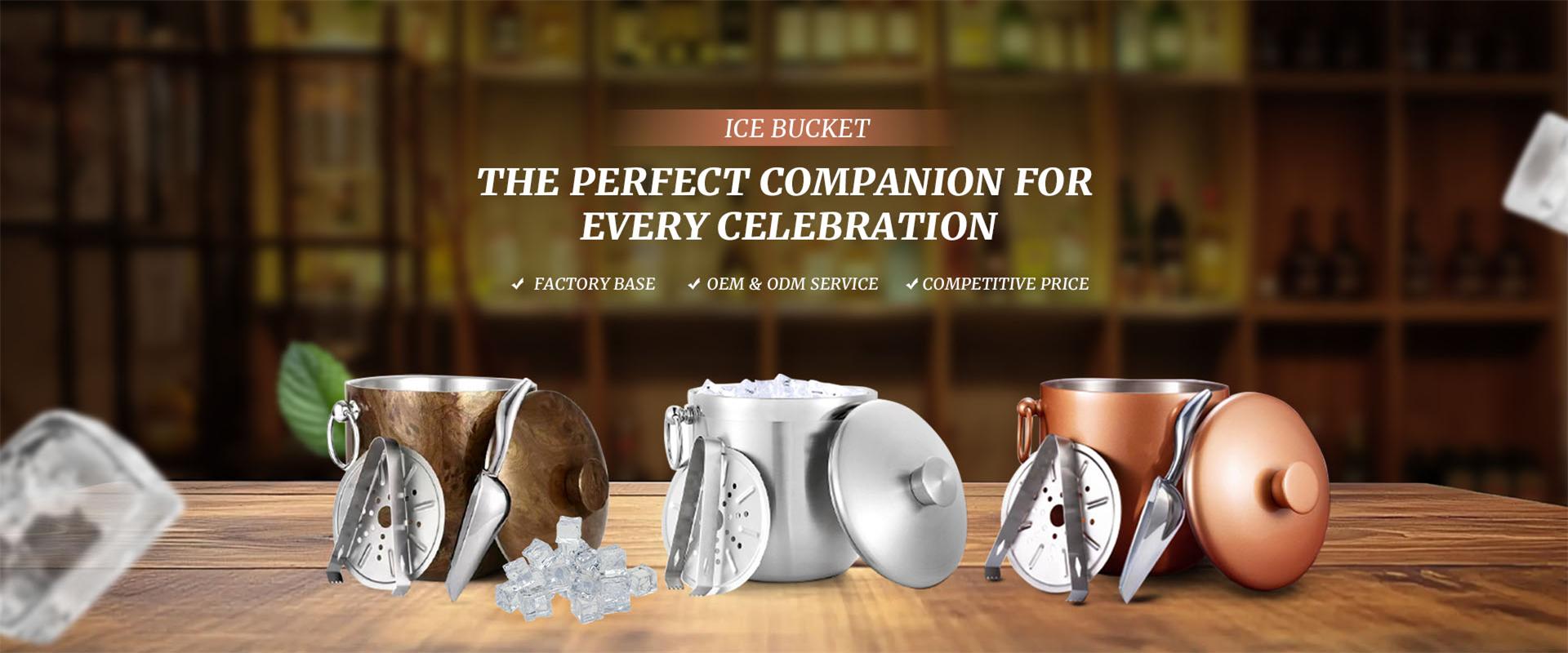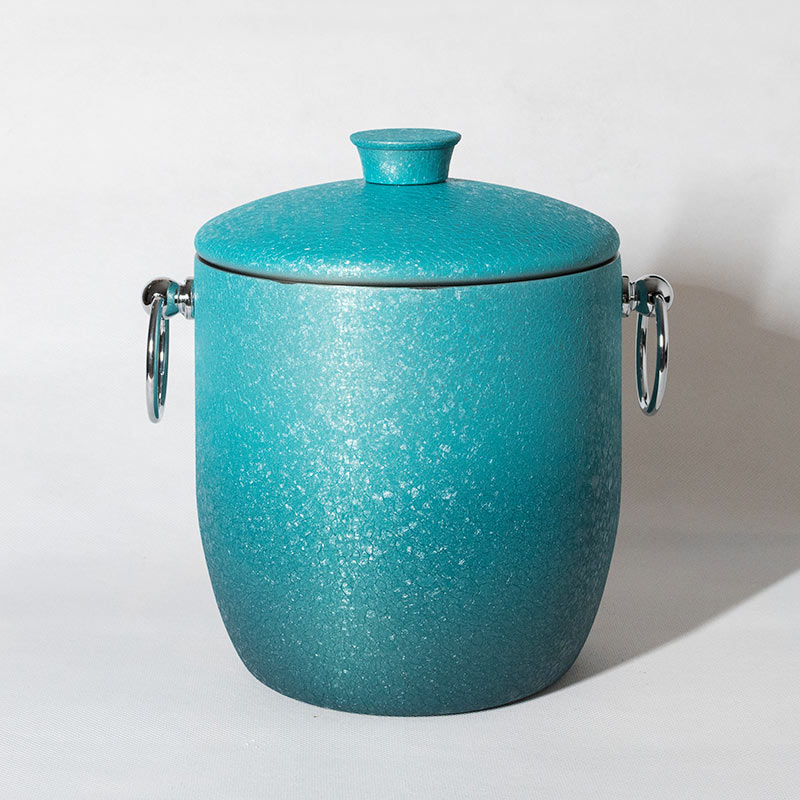Do You Put Water in An Ice Bucket?
When using an Ice Bucket, one of the most common questions people ask is whether or not water should be added inside. The answer depends on what you’re cooling, how long you need the ice to last, and the type of bucket you’re using. Adding water can either enhance cooling efficiency or accelerate melting if done incorrectly. This guide explains in detail when and why you should put water in an ice bucket, how to maintain the right balance between ice and water, and how different use cases—wine, champagne, or general beverage chilling—require different methods.
1) Understanding the Purpose of Water in an Ice Bucket
To understand if you should put water in an ice bucket, it’s important to first know how ice works as a cooling agent. Ice doesn’t make things cold just by being solid—it absorbs heat as it melts. Water inside an ice bucket changes the surface contact and cooling speed, affecting how efficiently your drink or item chills.
The Science of Cooling
| Condition | What Happens | Resulting Effect |
|---|---|---|
| Ice only | Air gaps remain between cubes | Slower cooling, ice lasts longer |
| Ice + small amount of water | Increases surface contact | Rapid cooling but faster melting |
| Ice completely submerged in water | Maximum surface contact | Fastest cooling but shortest ice life |
When you add water, the liquid fills the spaces between the ice cubes, allowing better contact with the bottle or item being chilled. This helps transfer cold more efficiently. However, it also accelerates melting because water conducts heat faster than air.
Rule of Thumb:
For fast chilling: Add a mix of ice and cold water (best for wine, champagne, or soda bottles).
For long-term ice storage: Use ice only, with minimal or no water.
2) When to Add Water — And When Not To
Whether or not you put water in the ice bucket depends largely on the purpose of use. Here’s how to decide in different scenarios:
A) Cooling Wine or Champagne
Yes, add water.
For bottles, combining ice with water allows cold to spread evenly around the glass or metal surface. Add about two-thirds ice and one-third water for optimal results.Why: The mix ensures full contact, cooling a bottle from room temperature to serving temperature within 15–20 minutes.
Pro tip: Sprinkle a handful of salt into the mix. Salt lowers the freezing point of water, creating a super-chilled brine that cools beverages faster.
B) Preserving Ice for Later Use
No, avoid adding water.
If the goal is to keep ice cubes solid for serving drinks later, water only speeds up melting. Keep the lid closed and avoid exposing the bucket to direct heat.Alternative method: Line the interior with a dry towel to absorb condensation and insulate the ice further.
C) Serving Cocktails or Whiskey
Minimal water only if needed.
Bartenders usually prefer dry ice buckets because too much water dilutes the cubes used in drinks. Keep cubes separate using a drain insert if your bucket includes one.Tip: Replace partially melted ice every few hours instead of mixing with water.
D) Outdoor or Event Use
Balanced method.
In warm outdoor settings, mix ice and a little water to maintain cold contact, but replace melted ice frequently. For larger containers or party tubs, maintain a 70:30 ice-to-water ratio for steady cooling.
| Scenario | Add Water? | Recommended Ratio (Ice:Water) | Purpose |
|---|---|---|---|
| Cooling wine or champagne | Yes | 2:1 | Even, fast cooling |
| Long-term ice storage | No | 1:0 | Extend ice life |
| Cocktail service | Minimal | 3:1 | Keep cubes dry and solid |
| Outdoor parties | Moderate | 7:3 | Maintain chill under heat |
3) How to Create the Perfect Ice-Water Mix
If you decide to add water to your ice bucket, it’s important to get the proportions and preparation steps right. An incorrect mix can cause over-melting or inconsistent cooling. Follow these detailed guidelines for the best results.
Step-by-Step Guide
Pre-chill the bucket:
Place the empty ice bucket in the freezer or fill it briefly with cold tap water to lower its temperature before adding ice. This step slows the initial melt rate.Add ice cubes first:
Fill the bucket halfway with large, dry ice cubes. Larger cubes melt slower and keep the water cooler longer. Avoid crushed ice—it melts almost immediately.Pour in cold water gradually:
Add cold, filtered water until it fills roughly one-third of the bucket. Stir gently to let cubes settle and create an even cooling mix.Add salt for rapid cooling (optional):
Mix in a tablespoon of rock salt. The salt lowers the water’s freezing point, making it colder than ice alone. This method is commonly used in professional bars for fast beverage chilling.Place bottles or cans securely:
Insert your beverage vertically, ensuring it’s fully surrounded by the ice-water mixture. Rotate occasionally for uniform temperature distribution.Monitor and refresh:
As the ice melts, pour out some water and add fresh ice every 30–45 minutes to maintain consistent coldness without overflowing.
Temperature Efficiency Table
| Mix Type | Approx. Temperature Range | Cooling Speed (750ml Bottle) | Ice Longevity |
|---|---|---|---|
| Ice only | 0–4°C | 40–50 minutes | 5–6 hours |
| Ice + cold water | -1 to 2°C | 15–20 minutes | 2–3 hours |
| Ice + water + salt | -4 to -2°C | 10–15 minutes | 1–2 hours |
4) Practical Tips and Mistakes to Avoid
Even though adding water can improve cooling, small mistakes can reduce efficiency or cause messes. Here’s how to handle your ice bucket correctly in different situations.
Best Practices
Use filtered or clean ice: Dirty ice can affect the taste and smell of beverages, especially when water is added.
Keep the lid closed when not in use: Minimizes heat exchange and slows melting.
Drain excess water regularly: If too much meltwater accumulates, ice floats and loses contact with bottles.
Use an insert tray if available: It separates solid ice from meltwater, extending the ice’s life while still cooling efficiently.
Match bucket size to usage: For one or two bottles, a 3-liter insulated bucket is enough; for large events, use a 10-liter tub.
Common Mistakes
| Mistake | Consequence | Correction |
|---|---|---|
| Overfilling with water | Ice melts rapidly and dilutes cold | Maintain a 2:1 ice-to-water ratio |
| Using crushed ice | Melts within minutes | Opt for large or cube-shaped ice |
| Forgetting to pre-chill the bucket | Ice melts faster upon contact | Cool the bucket beforehand |
| Leaving bucket in sunlight | Heat transfer increases | Keep in shaded or indoor area |
| Mixing warm water | Raises overall temperature | Always use cold or refrigerated water |
Environmental and Material Considerations
Stainless Steel Buckets: Retain temperature longer and minimize condensation; suitable for adding water.
Acrylic Buckets: Lightweight but prone to fogging when mixed with water—best for quick use.
Glass Buckets: Visually appealing for table settings but require care to avoid cracking when filled with ice and water.
Conclusion
So, do you put water in an ice bucket? The answer depends on your goal:
For fast cooling of bottles, yes—add cold water (and even salt) to improve surface contact and cooling efficiency.
For keeping ice solid for later use, no—use only dry ice and minimize exposure to heat.
For cocktail service, add minimal water to avoid diluting cubes.
In short, water enhances cooling but shortens ice life. The perfect balance lies in understanding the purpose—cool drinks quickly or preserve ice for long events. By using the right ratio, maintaining proper insulation, and following best practices, you can achieve optimal performance from any ice bucket—whether in a home bar, hotel, or restaurant setting.
A well-managed ice-water balance doesn’t just keep beverages perfectly chilled; it reflects attention to detail, professionalism, and an understanding of the subtle art of hospitality.
Previous: How Long Does Ice Last in A Bucket
Next: What Is An Ice Bucket




